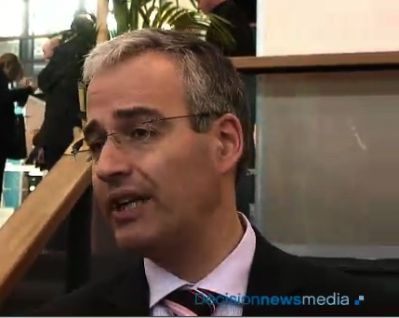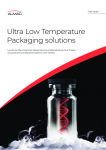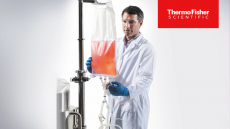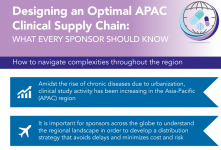Repackaging ban 'most powerful tool to prevent counterfeiting in Europe'
blanket ban on repackaging of pharmaceuticals last week, suggesting
that this would be the single most effective way to seal the supply
chain for counterfeiting drugs.
EFPIA president Arthur Higgins, who is also CEO of Bayer Healthcare, told a press conference that a ban on repackaging - coupled with a system of pack level coding (see earlier article here ) " could almost eliminate " counterfeits in the European supply chain.
" We believe [a ban] is the only measure to ensure that the products we produce are the same products that patients consume ," said Higgins.
" We must not allow a system that will allow third parties to take our medicines out of their packs and pass them on to consumers ," he added.
Under current EU rules, medicines can be re-boxed or re-labelled after they leave the site of production, and tablets can be removed from their blisters and reconditioned.
The practice occurs because companies can source tablets from a low-cost country and re-import them into one which commands higher prices.
Often this undercuts the originator's product in the destination country, saving money for the healthcare system while still allowing the re-importer to skim off a profit.
Higgins said EFPIA was not taking on these so-called parallel importers in general, simply the process of repackaging. "
We have the technology to dramatically reduce counterfeiting in Europe, but the solution starts with the integrity of our packaging. " "
As an industry we are prepared to make the necessary investment so that we can track and trace our products.
But that will have no value if people are allowed to take and destroy our packaging ," he stressed.
Higgins welcomed the European Commission's recent activities in this area, including the set of proposals in March which puts forward a series of measures to improve product integrity, including a possible ban on repackaging.
He also acknowledged the fact that the French Presidency of the EU, which starts July 1, has also placed tackling of counterfeit medicines as a priority.
It's expected that proposals for tougher EU legislation will be forthcoming by the end of the year as part of the new 'pharmaceutical package' Jean-Francois Dehecq, chairman of Sanofi-Aventis and leader of the counterfeiting taskforce at EFPIA, stressed that while there is no simple solution to the problem, a ban on repackaging, coupled with the use of a unique pack-level identifier such as the 2D data matrix code that will be piloted next year, " will make it very, very difficult for the counterfeiters. "
The integrity of medicine packaging - elements such as tamper evident seals and other security features, are essential components of any effective anti-counterfeiting strategy, said Dehecq.
The ban on repackaging - along with a harmonised EU-wide identification system for medicines, defining clear liabilities for all parties involved in the pharmaceutical distribution chain, heavier penalties for counterfeiters and a consumer education programme to educate about the dangers of using some Internet pharmacies - " are measures we believe are necessary to protect patients from the real and present danger of counterfeit medicines ," said Higgins.
EU statistics released in May showed that a total of 4.08 million medicinal products were seized at EU customs borders last year.
For its part, the European Association of Euro-Pharmaceutical Companies (EAEPC), which represents the interests of parallel importers in the region, is adamant that repackaging is not an entrypoint for counterfeits.
" Parallel distributors who repackage are regulated as manufacturers, and EAEPC members have demonstrated compliance with the corresponding responsibilities.
To ensure the ongoing safety of the supply chain, these requirements should be preserved ," said Dr Heinz Kolbert, the association's Secretary General.
The EAEPC points out in its responses to the Commission's proposals that repackaging is not just the preserve of parallel importers.
It is also carried out by originator companies in a number of circumstances, such as overstock situations, and can employ contractors to do so.
It also occurs in hospitals/pharmacies.
Moreover, " repackaging also requires other steps, such as performing visual inspection of the product, control and recording of batch numbers and exchanging (and/or adding information into) the patient information leaflet ," according to the EAEPC.
" These procedures are supervised by an EU Qualified Person, who is responsible for final batch release, " it adds.
This " provides an additional safety layer, allowing for individual inspection of packs ."
EAEPC also takes issue with the notion that its member companies would be incapable of taking part in the EFPIA proposal for mass serialisation of individual packs.
" The contrary is true: they are well able, and several EAEPC members do imprint their own barcode or even 2D barcode ."















